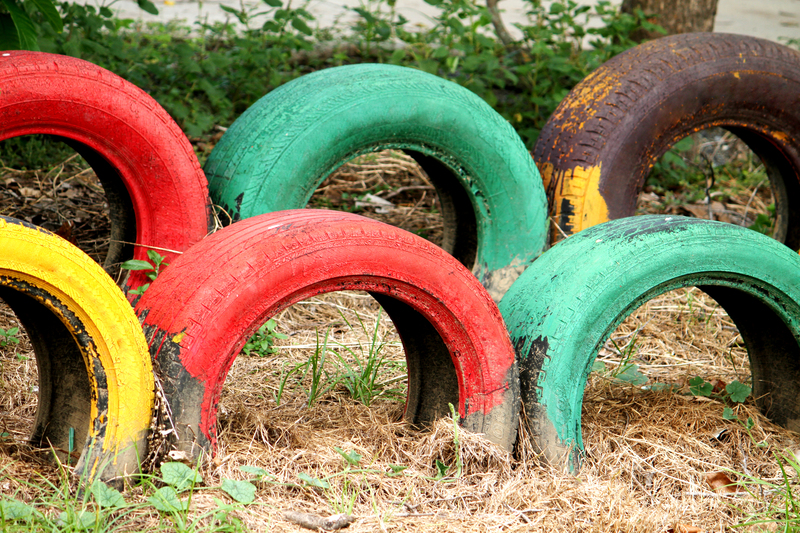Teaching Kids About Zero Waste Living
Posted on 24/12/2024
In today's fast-paced world, the concept of zero waste living is gaining traction. Teaching kids about zero waste living not only promotes environmental responsibility but also empowers them to make a positive impact on the planet. By instilling these values at a young age, we help shape a generation that prioritizes sustainability. In this article, we will explore effective ways to teach kids about zero waste living, including practical tips, strategies, and the benefits and challenges that come with it.
Understanding Zero Waste Living
Zero waste living is a lifestyle that aims to reduce the amount of waste that ends up in landfills and oceans. It focuses on minimizing waste production and maximizing recycling and composting. The goal is to create a circular economy where products and materials are reused, recycled, and regenerated rather than being discarded.

Why Teach Kids About Zero Waste Living?
Children are the future stewards of our planet. Teaching them about zero waste living instills a sense of responsibility, creativity, and problem-solving skills. Additionally, kids are naturally curious and eager to learn, making it an ideal time to introduce them to sustainable practices. By teaching kids the importance of reducing waste, we empower them to make environmentally conscious decisions throughout their lives.
Effective Strategies for Teaching Zero Waste Living
Here are some practical strategies to teach kids about zero waste living:
1. Lead by Example
Children learn by observing the behavior of adults. Be a role model by practicing zero waste living in your daily life. Show them how to separate recyclables, use reusable bags, and compost food scraps. When kids see adults prioritizing these habits, they are more likely to follow suit.
2. Start a Zero Waste Challenge
Turn zero waste living into a fun and engaging activity by starting a family zero waste challenge. Set goals such as reducing plastic use, cutting down on food waste, and minimizing paper consumption. Track progress and reward achievements to keep kids motivated and enthusiastic about sustainability.
3. Teach the 5 R's
Introduce kids to the 5 R's of zero waste: Refuse, Reduce, Reuse, Recycle, and Rot. Explain what each concept means and how they can apply it in their daily lives. For example, teach them to refuse single-use plastics, reduce unnecessary purchases, reuse items creatively, recycle properly, and compost organic waste.
4. Get Involved in Community Initiatives
Engage kids in community initiatives that promote zero waste living. Participate in local clean-up events, recycling drives, and educational workshops. These activities not only provide hands-on learning experiences but also foster a sense of community and teamwork.
5. Use Educational Resources
Utilize books, videos, and online resources specifically designed for kids to learn about zero waste living. Many educational platforms offer interactive content that makes learning about sustainability fun and accessible. Consider incorporating these resources into your child's reading or screen time.
Tips for Zero Waste Living with Kids
Here are some additional tips to make zero waste living enjoyable and manageable for kids:
- Encourage DIY projects such as making toys or crafts from recyclable materials.
- Involve kids in meal planning and preparation to reduce food waste.
- Use reusable containers and utensils for school lunches and outings.
- Create a composting bin together and teach them how to compost food scraps.
- Teach kids to donate or repurpose old toys and clothes instead of throwing them away.
Pros and Cons of Teaching Kids About Zero Waste Living
Like any educational initiative, teaching kids about zero waste living comes with its own set of advantages and challenges:
Pros
- Promotes environmental responsibility and sustainability.
- Encourages creativity and problem-solving skills.
- Fosters a sense of community and teamwork.
- Empowers kids to make positive changes in their daily lives.
Cons
- Initial challenges in changing established habits.
- May require additional time and effort to educate and engage kids.
- Finding age-appropriate resources and activities can be challenging.

Key Takeaways
Teaching kids about zero waste living is an investment in our planet's future. By leading by example, making learning fun, and utilizing available resources, we can instill sustainable habits in children that will last a lifetime. While there are challenges, the benefits far outweigh the drawbacks, making zero waste education a worthwhile endeavor.
Conclusion
Incorporating zero waste living into children's lives is a rewarding and impactful journey. By teaching kids the importance of reducing waste, reusing materials, and recycling properly, we empower them to become environmentally conscious individuals. The strategies, tips, and insights provided in this article offer a comprehensive guide to help parents and educators navigate this important topic. Together, we can inspire the next generation to embrace zero waste living and create a more sustainable world.
Start today and watch as your kids become enthusiastic advocates for a zero waste lifestyle!


 020 3744 5548
020 3744 5548












